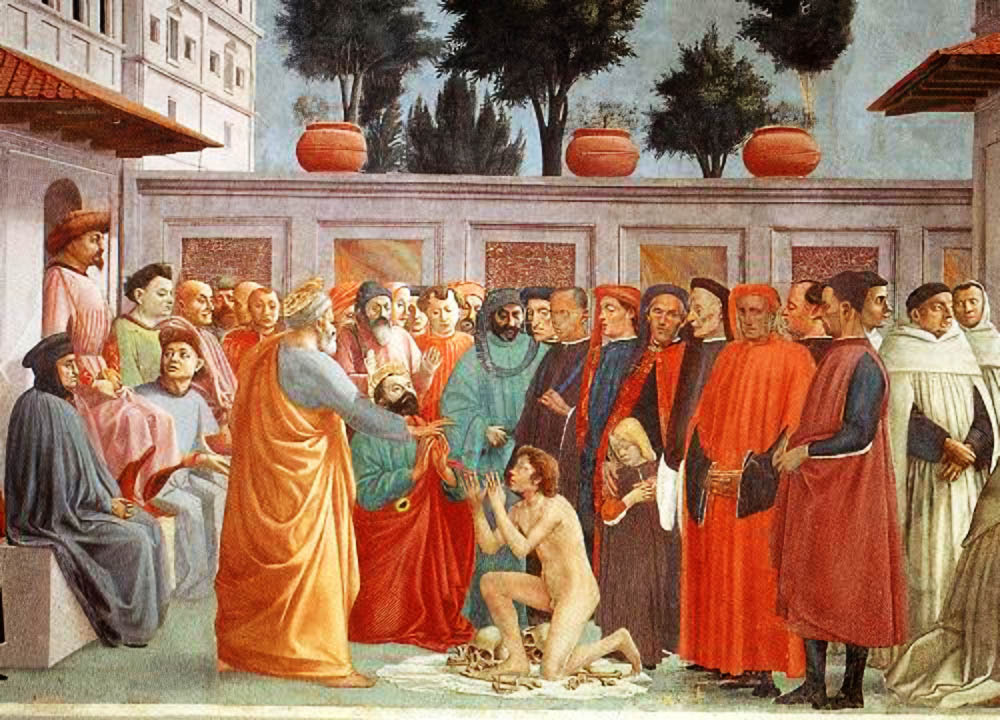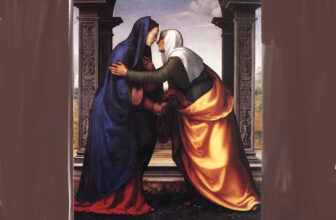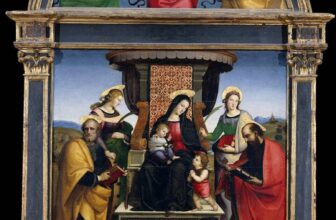
What Is Masaccio Known For
In the annals of art history, few figures loom as influential yet as enigmatic as Masaccio. Though his career was tragically brief, lasting only about six years, his revolutionary approach to painting changed the trajectory of Western art forever. Masaccio’s pioneering use of perspective, naturalism, and emotional expression marked the true beginning of Renaissance painting, laying the foundation upon which future giants like Michelangelo, Leonardo da Vinci, and Raphael would build.
Born as Tommaso di Ser Giovanni di Simone in San Giovanni Valdarno, near Florence, on December 21, 1401, Masaccio adopted a nickname that roughly translates to “Big Clumsy Tom”, a moniker likely reflecting his disdain for superficial elegance and social graces. Instead of chasing fame or fortune, Masaccio immersed himself in the world of visual storytelling, pouring his soul into pigments and plaster.
Tragically, Masaccio’s life was cut short when he died under mysterious circumstances in Rome in 1428, at the tender age of 26 or 27. Despite his brief life, the innovations he introduced would ripple through the centuries.
Masaccio emerged during a transformative period in Italian art. The 14th-century Gothic style, characterized by stylized forms and ornamental details, was giving way to a more grounded, human-centered vision of the world. Alongside contemporaries like Filippo Brunelleschi and Donatello, Masaccio embraced humanism, realism, and the revival of Classical antiquity, thereby helping to usher in the Early Renaissance.
Masaccio is celebrated for several groundbreaking contributions:
1. Linear Perspective
Masaccio was one of the first painters to incorporate scientific perspective into his compositions. With help from his friend, the architect Brunelleschi, he mastered the geometric technique of vanishing points and horizon lines to create the illusion of three-dimensional space on a two-dimensional surface.
2. Chiaroscuro (Light and Shadow)
Unlike his predecessors who used flat, decorative color schemes, Masaccio employed chiaroscuro, a technique that uses strong contrasts between light and dark, to give volume and solidity to figures.
3. Naturalism and Emotion
Masaccio’s characters are not ethereal beings but real, breathing individuals. He infused his subjects with human emotion, psychological depth, and physical realism, helping to move away from medieval stylization.
4. Religious Humanism
While deeply spiritual, Masaccio’s work emphasized the human aspect of Biblical stories, showing saints and sinners alike as part of the same emotional and physical world.
Masaccio’s Most Famous Paintings
Despite the brevity of his career, Masaccio’s oeuvre includes several masterpieces that have become icons of Western art. Here are his most significant works:
1. The Tribute Money (c. 1425)
Location: Brancacci Chapel, Santa Maria del Carmine, Florence
This fresco narrates a story from the Gospel of Matthew in which Jesus instructs Peter to find a coin in the mouth of a fish to pay the temple tax. The scene is revolutionary in its use of continuous narrative, where different moments in time are depicted within the same frame. The use of perspective draws the viewer into the painted space, while the figures possess real weight and emotion. The fresco is also a political commentary on civic duty and taxation, reflecting the realities of Florence at the time.
2. Expulsion from the Garden of Eden (c. 1425)
Location: Brancacci Chapel, Florence
This emotionally charged fresco shows Adam and Eve being cast out of Paradise. Masaccio’s depiction is raw and unflinching: Adam covers his face in shame, while Eve wails in despair. The anatomical precision and emotional intensity were groundbreaking and deeply moving for contemporary viewers, and remain so today.
3. The Holy Trinity (c. 1427–1428)
Location: Santa Maria Novella, Florence
One of Masaccio’s most celebrated frescoes, The Holy Trinity demonstrates his full command of perspective and architectural illusionism. Painted in a side chapel, the fresco creates the illusion of a receding chapel within the wall. At its apex is God the Father supporting the crucified Christ, with the dove of the Holy Spirit hovering between them. Below are the Virgin Mary, Saint John, and two donors. At the base is a painted tomb with a skeleton and the inscription: “I was what you are; what I am, you will become.” The memento mori theme reminds viewers of mortality and the promise of salvation.
4. The Pisa Altarpiece (Madonna and Child with Saints) (c. 1426)
Location: National Gallery, London (some panels)
Commissioned for the Church of Santa Maria del Carmine in Pisa, this polyptych is one of Masaccio’s few surviving panel paintings. The Madonna and Child Enthroned reflects Masaccio’s evolving style, with a naturalistic rendering of space and weighty, expressive figures.
5. Saint Peter Baptizing the Neophytes (c. 1425)
Location: Brancacci Chapel, Florence
This fresco captures the moment Saint Peter baptizes new Christian converts. The attention to water dripping from the neophyte’s head, the chill of the figures shivering in the background, and the emotional gravity all testify to Masaccio’s commitment to realism.
How Many Paintings Did Masaccio Create?
Masaccio’s career was short, and only a handful of works are securely attributed to him, some art historians count about a dozen paintings and fresco cycles, though there are debates about attribution.
His Brancacci Chapel frescoes, done in collaboration with Masolino, represent the most substantial body of his work. While Masaccio painted parts of the cycle, Masolino and Filippino Lippi later completed others. Masaccio’s contribution, however, stands out for its technical and emotional brilliance.
What Is Masaccio’s Most Expensive Painting?
Since most of Masaccio’s works are frescoes embedded in church walls, they have never been sold, and thus do not have auction prices. However, the panels from the Pisa Altarpiece, which were disassembled and sold off over time, are the closest to market-appreciable artworks.
One of the panels, “The Crucifixion,” was acquired by the Museo di Capodimonte in Naples. Another panel, “The Adoration of the Magi,” is housed in the Staatliche Museen in Berlin. If any of these pieces were hypothetically sold today, their value would be in the tens or even hundreds of millions of dollars, given their historical significance and rarity.
But again, no Masaccio painting has ever been sold in a modern art market, and their true value is considered priceless from a cultural heritage perspective.
Where Are Masaccio’s Paintings Located Today?
Masaccio’s surviving works are scattered across several prominent European museums and churches:
Florence
Brancacci Chapel, Santa Maria del Carmine: Home to “The Tribute Money,” “Expulsion from the Garden of Eden,” and more.
Santa Maria Novella: Hosts The Holy Trinity fresco.
London
The National Gallery: Several panels from the Pisa Altarpiece, including The Virgin and Child, are housed here.
Berlin
Gemäldegalerie, Staatliche Museen: Hosts The Adoration of the Magi from the Pisa Altarpiece.
Naples
Museo di Capodimonte: Holds The Crucifixion panel.
Pisa
Originally commissioned for the Church of Santa Maria del Carmine, though the altarpiece was dismantled and distributed to other locations.
Many of his frescoes are still in situ in Florence and are part of Italy’s national heritage. These frescoes are protected and maintained by art conservators, allowing modern viewers to witness firsthand the beginnings of Renaissance art.
Masaccio’s Legacy: The Father of Renaissance Painting
Masaccio’s influence is difficult to overstate. Though he died young, his innovations laid the groundwork for centuries of Western art. Here’s how his legacy endures:
1. Influence on Michelangelo and Leonardo da Vinci
Both Michelangelo and Leonardo studied Masaccio’s frescoes in the Brancacci Chapel. Michelangelo in particular was deeply influenced by Masaccio’s anatomical precision and emotional intensity, qualities that would define his own masterpieces like the Sistine Chapel ceiling.
2. Revolution in Perspective and Space
Masaccio was the first to master mathematical perspective in a way that not only created realistic space but also served the narrative. Artists from Piero della Francesca to Raphael built on his innovations.
3. Narrative Realism
He redefined how stories were told through painting, emphasizing emotional resonance, physical presence, and human drama. His characters do not just act, they feel, grieve, hope, and fear.
4. Bridge Between Gothic and Renaissance
Masaccio is often regarded as the first true Renaissance painter. He moved beyond the ornate symbolism of the Gothic tradition and forged a path toward the humanist ideals of the High Renaissance.
5. Modern Art Education
To this day, art students from around the world study Masaccio’s works to understand the principles of form, light, anatomy, and perspective. His paintings are part of the canon of classical training.
Masaccio’s Art Is a Dialogue with Eternity
Masaccio’s life was fleeting, but his impact endures like a stone dropped in still water, its ripples touching every shore of Western art. From the sacred walls of the Brancacci Chapel to the museum halls of London and Berlin, his works speak of a moment in history when art broke free from flat icons and came alive with depth, emotion, and intellect.
He painted not just bodies but souls, not just stories but truths. In doing so, Masaccio transformed painting from a decorative craft into a window to human experience.
More than six centuries later, the questions he posed about faith, mortality, and the human condition still echo. And his legacy, as the artist who painted like no one before him, remains as fresh and revolutionary as ever.




